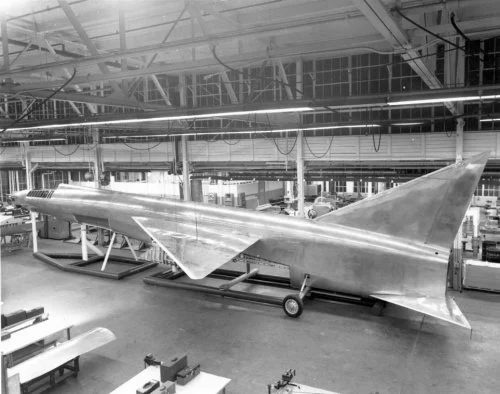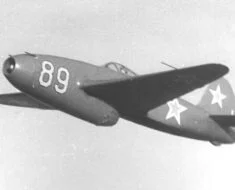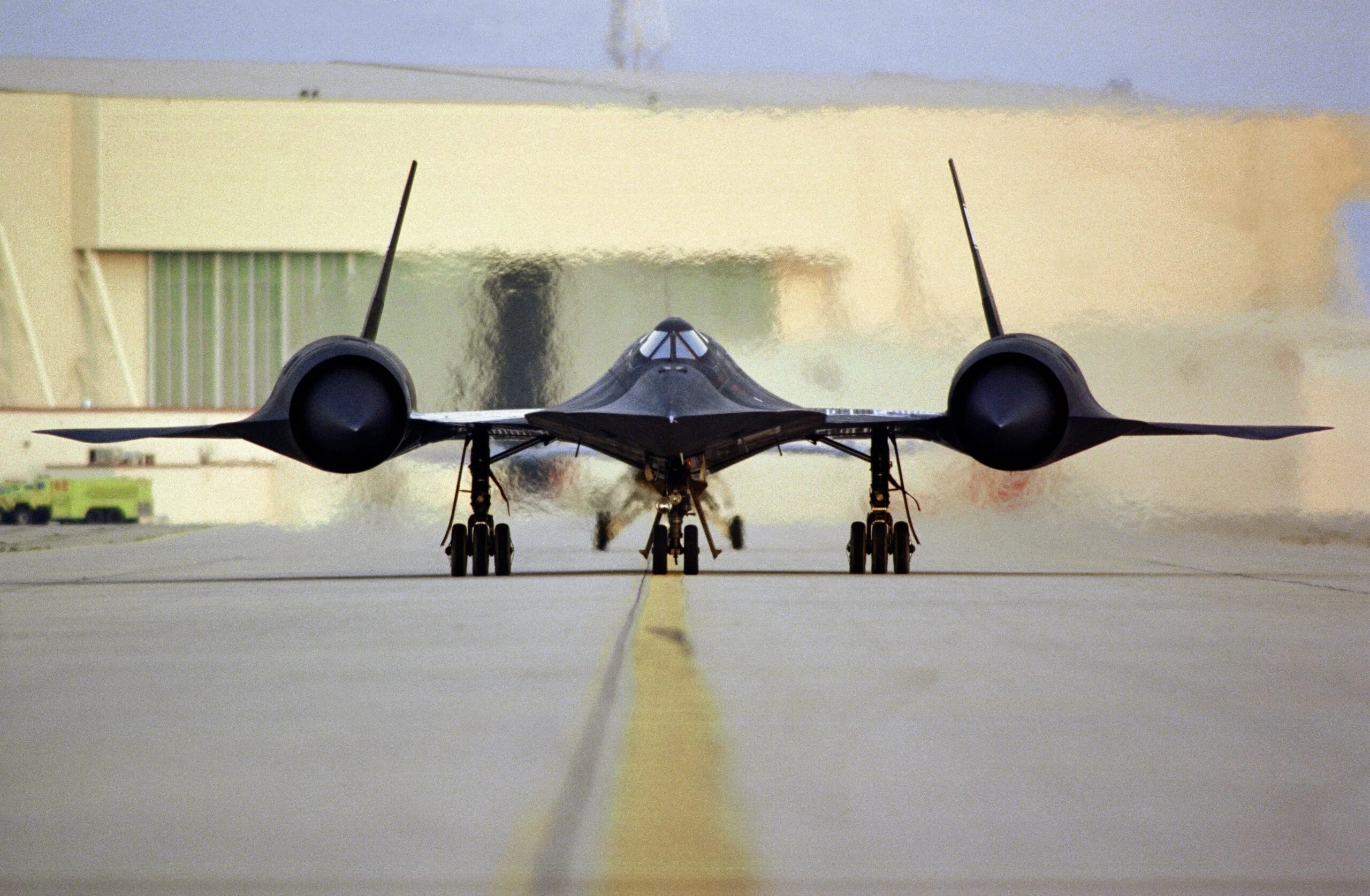Few aircraft have sparked as much intrigue and speculation as the XF-103. Conceived during the height of the Cold War, this jet was designed to counter the ever-increasing threat of Soviet bombers.
However, despite its advanced concepts and potential capabilities, the XF-103 remained a dream, never progressing beyond the design stage. We delve into the history, design features, and the reasons why the XF-103 never took to the skies.
Contents
Interceptor Inception
The inception of the XF-103 can be traced back to the early 1950s, during a period marked by intense Cold War tensions and rapid advancements in aviation technology. This era, characterised by the fear of Soviet nuclear aggression and the race to establish air superiority, set the stage for the development of the XF-103.

The United States, acutely aware of the growing capabilities of Soviet long-range bombers, recognised the urgent need for a new class of interceptors. These aircraft had to be capable of reaching unprecedented speeds and altitudes to effectively counter the potential threat of high-altitude, high-speed Soviet bombers, which could potentially deliver nuclear payloads to the American mainland.
It was within this context of strategic military necessity and technological competition that the idea for the XF-103 was conceived.
Read More The Mach 2.39 F-106 Delta Dart
Republic Aviation, a company with a notable history in producing fighter aircraft, including the renowned P-47 Thunderbolt of World War II, took on the challenge of designing this advanced interceptor. In 1951, under the project designation “AP-57”, they proposed the XF-103.

A Technological Revolution
The design was a response to the United States Air Force’s request for a high-speed, high-altitude interceptor, a call that was part of a broader effort by the military to fortify America’s air defences.
The XF-103 was envisioned to be a significant leap forward in aviation technology. It was to incorporate a number of revolutionary features, including a mixed propulsion system consisting of a turbojet and a ramjet. This combination was aimed at providing the aircraft with the capability to sustain speeds of Mach 3, far exceeding the capabilities of existing interceptors of the time.
Design
The design of the XF-103 was a remarkable testament to the innovative spirit of the era. The XF-103 was designed to meet the United States Air Force’s need for a high-speed, high-altitude interceptor capable of countering the Soviet bomber threat during the Cold War.
One of the most notable aspects of the XF-103’s design was its propulsion system. The aircraft was to be powered by a combination of a turbojet and a ramjet engine. This unique setup was intended to provide exceptional performance across a wide range of altitudes and speeds.

The turbojet would operate at lower speeds and altitudes, while the ramjet, which requires high-speed airflow to function, was designed to take over at higher speeds and altitudes. This propulsion system was expected to enable the XF-103 to reach speeds of up to Mach 3, a remarkable feat for the time.
Aerodynamically, the XF-103 was designed with a sleek, arrow-like shape to minimise drag and maximise speed and agility at high altitudes. The aircraft featured a long, pointed nose and a highly swept delta wing configuration. These design choices were crucial for achieving the desired performance at the extreme speeds and altitudes at which the aircraft was intended to operate.
Read More: Boeing Monomail – The Mail Delivery Plane
Titanium Wonder
The use of materials in the XF-103 was another area where the design pushed the boundaries of technology. The aircraft was one of the first to incorporate titanium extensively in its construction. Titanium was chosen for its high strength-to-weight ratio and its ability to withstand the extreme temperatures that the aircraft would encounter at Mach 3 speeds.

In terms of armament, the XF-103 was designed to be a formidable interceptor. It was planned to be equipped with air-to-air missiles, notably the advanced AIM-47 Falcon, which was under development at the time.
The XF-103 was also intended to feature a cutting-edge fire-control radar system. This radar would allow it to detect and engage enemy aircraft at long ranges, a crucial capability for an interceptor tasked with defending against high-speed, high-altitude bombers.
Additionally, the XF-103’s cockpit was designed with advanced avionics and ejection systems, keeping in mind the extreme operating conditions and the safety of the pilot.
Challenges
However, the XF-103 faced numerous challenges. The most significant was technological. The integration of a turbojet and a ramjet in a single airframe presented immense engineering difficulties. The development of suitable materials to withstand the high temperatures and pressures at Mach 3 speeds was another hurdle.
Budgetary constraints also played a role. The cost of developing such an advanced aircraft amidst other competing Air Force projects was daunting. By the late 1950s, emerging technologies like surface-to-air missiles were seen as more cost-effective for home defence.
Read More: Hillson FH.40 Hurricane – Biplane and Monoplane?
Cancellation
The cancellation of the XF-103 project was the result of a confluence of technological, strategic, and financial factors.
Financial considerations were a key factor in the project’s cancellation. The cost of developing the new aircraft was substantial, and it competed for funding with other military projects. During this period, the United States was investing heavily in a diverse range of military technologies, including other aircraft and missile systems.
Given the budget constraints and the escalating costs associated with solving the XF-103’s technical challenges, the project struggled to justify its continued funding.
Moreover, the strategic landscape was changing. The emergence of intercontinental ballistic missiles (ICBMs) began to shift the focus of national defence strategies. ICBMs presented a new kind of threat that high-speed interceptors like the XF-103 were not designed to counter.

This shift diminished the perceived need for an interceptor that was specifically designed to combat high-altitude bombers, further undermining the rationale for the XF-103 project.
In addition, advancements in surface-to-air missile technology offered a more cost-effective solution for home defence against bomber threats. These missile systems were becoming increasingly capable and were seen as a viable alternative to manned interceptors.
Read More: Ilyushin Il-2 Sturmovik – The Flying Tank
As a result of these combined factors, the XF-103 project, despite its innovative design and potential capabilities, was deemed no longer viable or necessary. Consequently, the United States Air Force decided to cancel the project in 1957. The XF-103, therefore, remained a concept and never advanced to the prototype stage, becoming one of the many intriguing ‘what-ifs’ of aviation history.








